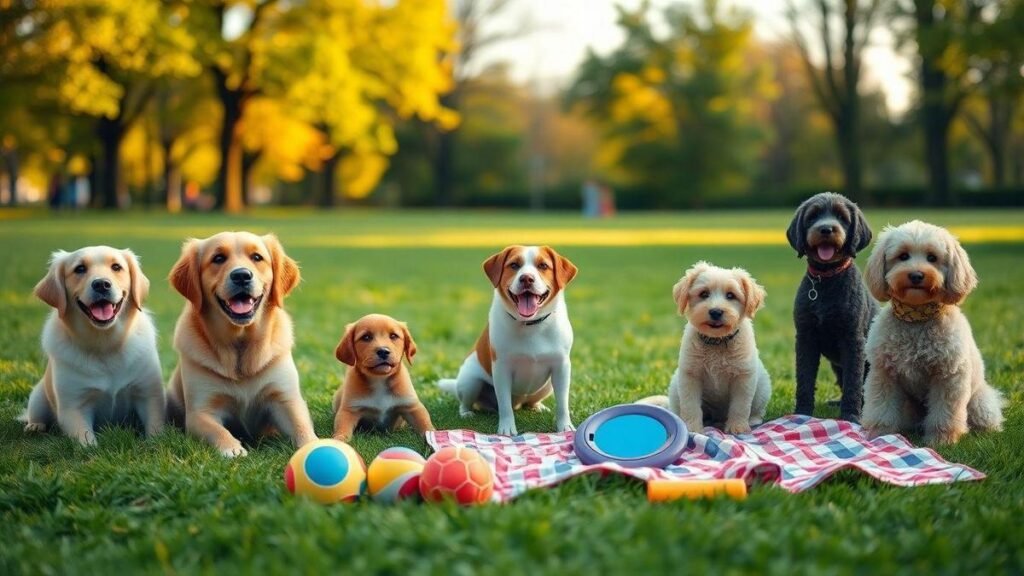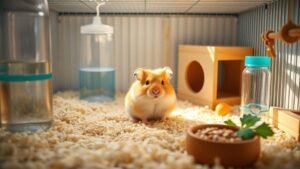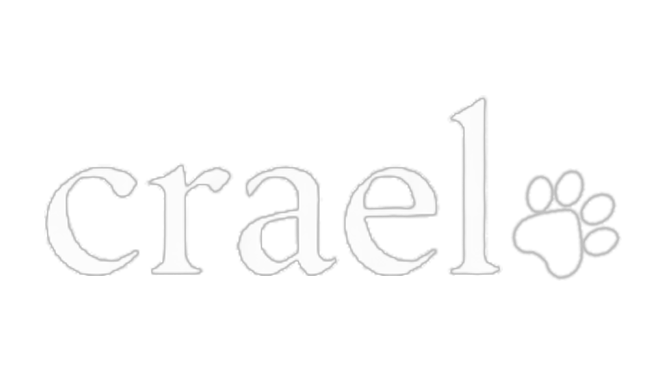Melhores raças de cães para famílias com crianças pequenas
I wrote this guide because choosing a dog can feel overwhelming. I share the calm breeds I trust, the simple signs I watch for in a child‑safe dog, how I match size to home and child age, and why I pick small breeds for tight spaces and large breeds for sturdy play. I list hypoallergenic options like Poodle, Bichon Frise, and Maltese, plus grooming and allergy tips, activity and training steps, and the health and budget checklist I review before adopting.
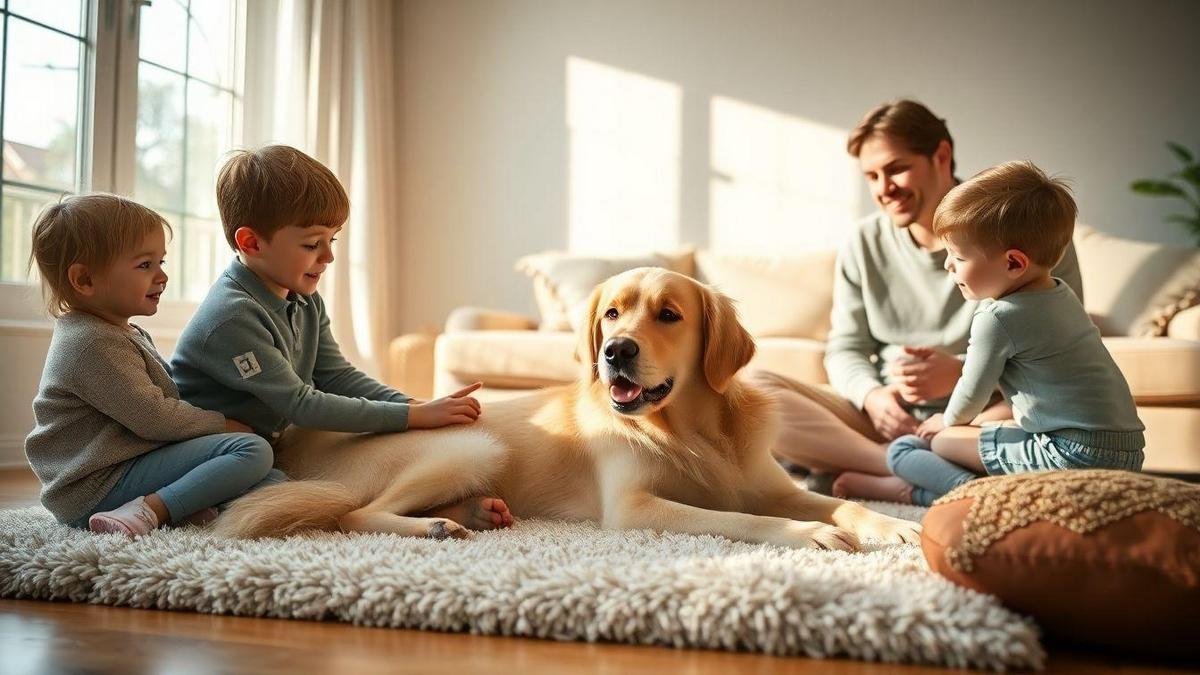
Key takeaway
- I trust Golden Retrievers around kids because they are gentle.
- I choose Labrador Retrievers for playful energy and easy training.
- I like Beagles for friendly, adaptable playmates.
- I prefer Poodles for smart, low‑shedding care.
- I favor Bulldogs for calm, sturdy companionship.
How I choose calm temperaments for child safety (Melhores raças de cães para famílias com crianças pequenas)
I want my home to feel safe and warm. I look for a calm dog that stays steady around kids. I focus on safety, patience, and friendly energy — the traits that make a dog reliable in a busy household. For an overview of family‑friendly options I often compare with my picks, I reference a roundup of the best dog breeds for families with kids to see temperament patterns across breeds.
Gentle dog breeds I trust
These breeds show steady temperaments and clear signals of being kid‑friendly.
| Breed | Typical temperament | Energy level | Why I trust them |
|---|---|---|---|
| Labrador Retriever | Friendly, patient, eager to please | Medium–high | Calm with kids, loves simple training |
| Golden Retriever | Gentle, loyal, forgiving | Medium | Soft‑mouthed and very tolerant |
| Beagle | Curious, sweet, social | Medium | Playful yet usually gentle with children |
I always meet a dog first and watch how it reacts to noise and hugs — that tells me more than any pedigree.
Signs I look for in a calm, child‑safe dog
- The dog stays calm when a toy drops or a child screams.
- The dog returns on command — shows training.
- The dog accepts gentle handling of ears, paws, belly without stress.
- No stiff body language or growling when surprised.
- Enjoys short, quiet play then rests near the family.
A calm dog moves steady and predictable. If I see stiff posture or snapping, I pause and reassess.
My simple temperament checklist before adoption
| Check | What I watch for | Pass = yes |
|---|---|---|
| Noise test | Dog stays calm when a toy drops or a child shouts | Yes / No |
| Handling test | Dog allows gentle petting of ears, paws, belly | Yes / No |
| Recall test | Comes when called from a short distance | Yes / No |
| Play style | Play is gentle, not wild or obsessive | Yes / No |
| Social test | Greets people and dogs calmly | Yes / No |
If a dog gets three or more No answers, I pause, try training, or look elsewhere. Safety first.
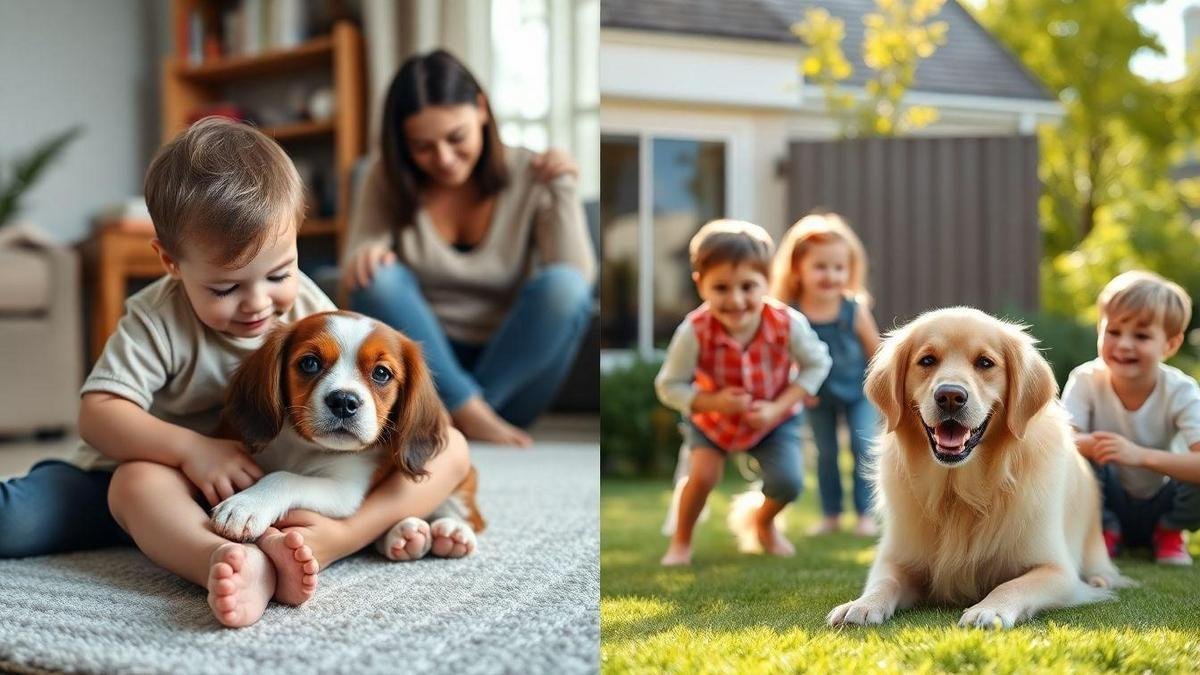
How I match dog size to home and child age (Melhores raças de cães para famílias com crianças pequenas)
Why I pick small breeds for tight spaces and careful handling
I choose small breeds when living space is limited. They need less room to move, tend to eat less, and can be gentler with small hands when properly socialized. For families searching for “Melhores raças de cães para famílias com crianças pequenas”, I recommend breeds that are patient, low‑aggression, and tolerant of handling.
| Breed (small) | Typical weight | Why I like them with kids | Best child age |
|---|---|---|---|
| Cavalier King Charles Spaniel | 13–18 lb | Calm, cuddly, patient | All ages |
| Beagle | 20–25 lb | Playful, sturdy, social | 3 years |
| Bichon Frise | 10–18 lb | Tolerant, low‑shedding | All ages |
| Pug | 14–18 lb | Affectionate, low exercise needs | 2 years |
| Havanese | 7–13 lb | Gentle, adaptable, quiet | All ages |
Why I choose large breeds for sturdy play and supervised energy
I pick large breeds when the family is active and has space. Big dogs can handle rougher play and often have more patience with boisterous kids. Supervision is essential — even friendly large dogs can accidentally knock over a child.
| Breed (large) | Typical weight | Why I like them with kids | Best child age |
|---|---|---|---|
| Labrador Retriever | 55–80 lb | Patient, eager to please | 2 years (with supervision) |
| Golden Retriever | 55–75 lb | Gentle, loyal, very social | 2 years (with supervision) |
| Bernese Mountain Dog | 70–115 lb | Calm, affectionate, sturdy | 4 years |
| Boxer | 50–80 lb | Energetic, playful, protective | 3 years |
| Standard Poodle | 40–70 lb | Smart, trainable, hypoallergenic option | 2 years |
My size‑and‑safety room guide
- Small dogs: prefer rooms with at least 80–120 sq ft of open space.
- Medium dogs: aim for 120–250 sq ft or a yard.
- Large dogs: 250 sq ft or a fenced yard recommended.
Safety items I use: baby gates, non‑slip rugs, toy storage, and a crate or quiet corner for the dog to retreat to. To get the house ready before bringing a dog home, I follow a checklist for how to prepare your home for a new dog or cat. Teach kids not to pull ears; teach dogs to wait for food.
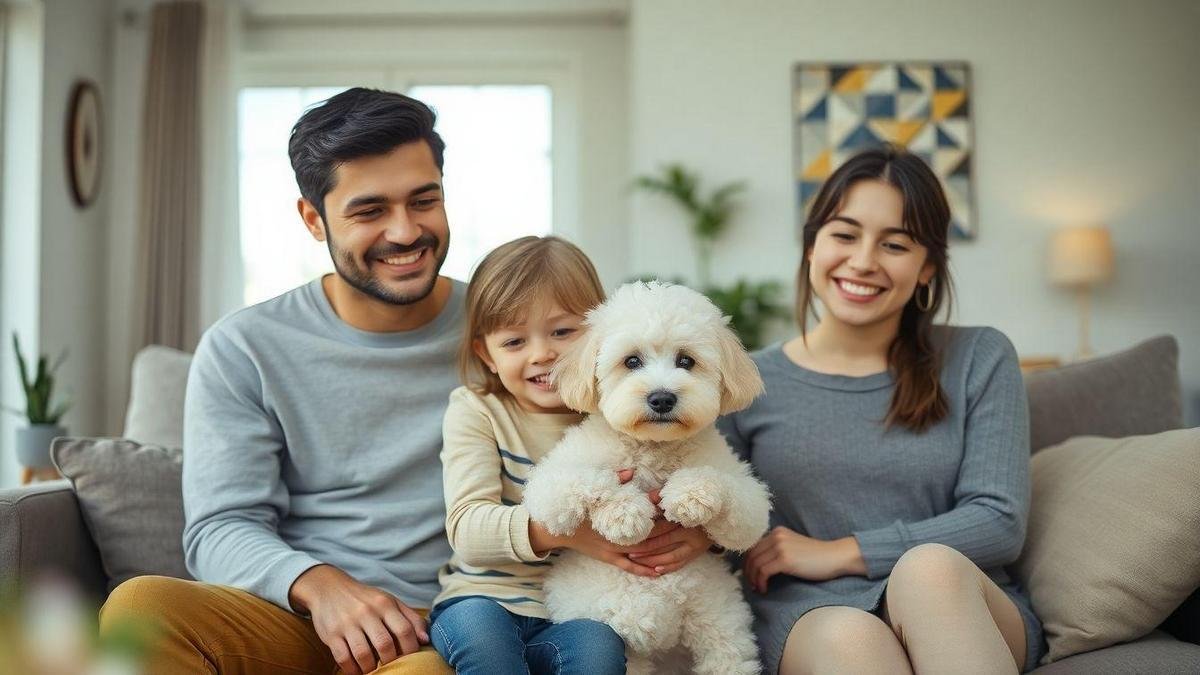
How I find hypoallergenic and low‑shed options (Melhores raças de cães para famílias com crianças pequenas)
I have allergies in my house and young kids, so I look for low‑shed, hypoallergenic dogs that can handle playtime. I test for behavior around children, amount of hair, and how easy it is to control dander.
Hypoallergenic breeds I consider: Poodle, Bichon Frise, Maltese
| Breed | Size | Shedding | Kid‑friendly | Grooming needs |
|---|---|---|---|---|
| Poodle | Small to large | Very low | Smart, playful | Regular trims and brushing |
| Bichon Frise | Small | Low | Cheerful, patient | Regular brushing and haircuts |
| Maltese | Small | Low | Gentle, lively | Daily brushing; periodic trims |
I once fostered a Bichon for a month — my son hugged it nonstop with no major sneezes. Real tests like that matter.
Grooming and allergy facts I rely on
- Dander is the main trigger; baths and wiping reduce it quickly.
- Shedding frequency matters more than hair length.
- Frequent brushing prevents loose hair from becoming airborne.
- HEPA air filters and washing bedding cut allergens in shared spaces. For cleaning food and water areas to lower contamination and dander, I follow tips on how to keep your pet’s food and water area clean and safe.
My grooming and allergy plan for sensitive families
- Daily: wipe the dog’s coat with a damp cloth to capture loose hair and dander.
- Every 2–3 days: brush with a coat‑appropriate tool.
- Weekly: bath with a gentle hypoallergenic shampoo.
- Monthly: professional trim for breeds like Poodle and Bichon.
- Home: HEPA air filter in the main play area; wash dog bedding twice a week.
- Health: regular vet checks for skin issues that increase dander; consider routine parasite prevention and safe topical options such as the best natural flea treatments when appropriate.
When I stick to this plan, my kids play happily and I breathe easier.
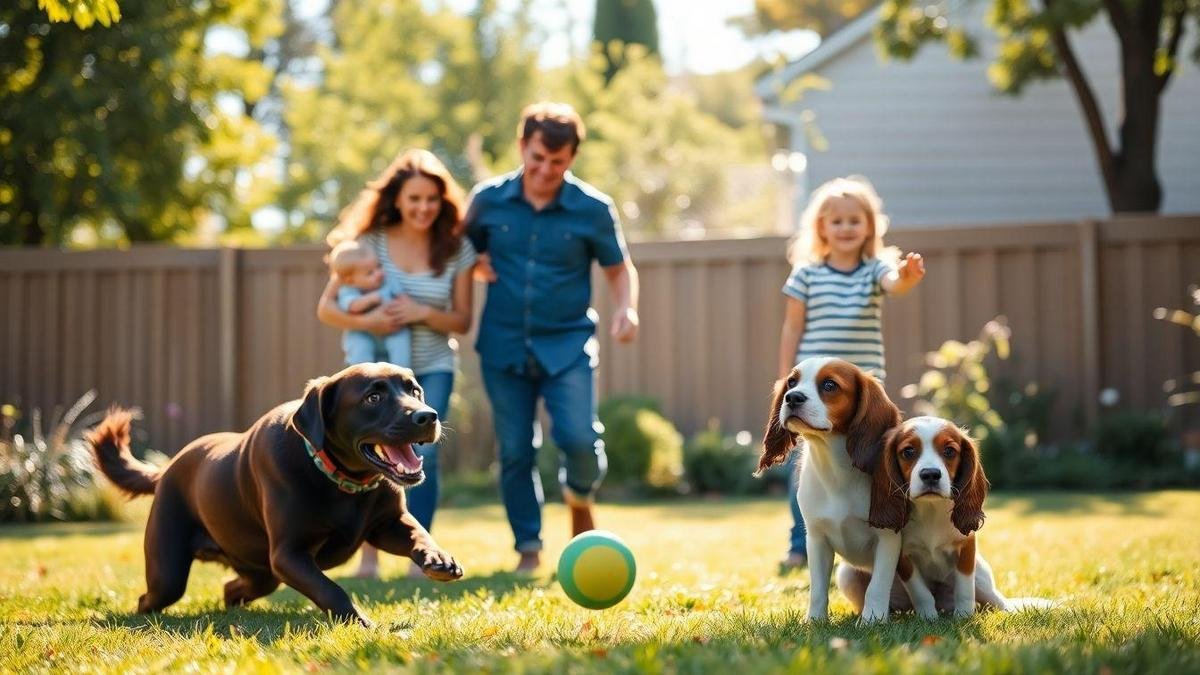
How I match activity needs to our family pace (Melhores raças de cães para famílias com crianças pequenas)
I match a dog’s energy to our daily rhythm so the pet fits our schedule and safety needs.
| Family type | Example breeds | Energy level | Quick note |
|---|---|---|---|
| Active families | Labrador, Border Collie | High | Needs daily activity and training |
| Families with toddlers | Cavalier King Charles Spaniel, Bulldog | Low–moderate | Better for calm indoor time |
Active breeds I enjoy with kids
- Labrador: playful, patient, loves fetch and swimming. Great for active kids.
- Border Collie: very smart and driven — needs mental outlets like agility or puzzle games.
To keep high‑energy dogs mentally and physically satisfied, I use interactive dog toys, indoor exercise routines like the best indoor exercises for small breeds, or build a simple indoor agility course when weather or time limits outdoor play.
Calm breeds I prefer with toddlers
- Cavalier King Charles Spaniel: affectionate couch companion, gentle with small hands.
- Bulldog: steady, low activity, prefers short walks and cuddles.
My daily exercise routine tips for families
- Morning: 10–20 minute walk — kids can help on short leashes.
- Midday: 10–15 minutes of play (fetch, hide‑and‑seek, puzzle toys).
- Evening: calm walk or cuddle time to wind down.
Teach kids basic dog rules: no pulling ears, no rough hugs, and always ask before petting. Keep exercise on the family calendar to maintain routine. For busy schedules I rely on guides for keeping indoor dogs active on a busy schedule and use meal time as training with techniques from how to use mealtime as training opportunities.

How I prioritize trainability and social skills (Melhores raças de cães para famílias com crianças pequenas)
I pick dogs that are easy to teach and gentle with kids. The right breed learns quickly and loves company — that keeps home life safe and joyful.
Breeds known for easy training
| Breed | Why I pick them | Kid‑friendly traits |
|---|---|---|
| Labrador | Quick to learn basic commands | Playful, patient, reliable |
| Golden Retriever | Eager to please and calm | Gentle, affectionate, trustworthy |
| Poodle | Smart and highly trainable | Alert, playful, low‑shed options |
For basic manners and to help a newly adopted dog settle in, I follow step‑by‑step guidance from a basic obedience training for adopted dogs plan and use short, consistent sessions.
Socialization steps I use
- Early exposure: introduce new sights and sounds slowly.
- Positive rewards: treats and praise for calm behavior.
- Supervised play: always watch interactions and step in if needed.
When adding a new puppy to a household with older pets, I follow tested approaches to introduce a new puppy or kitten to older pets and the broader steps to introduce a new pet to your home and other pets.
My short training starter plan for families (4 weeks)
| Week | Focus | Time per day |
|---|---|---|
| Week 1 | Name, sit, short leash walks | 10–15 min |
| Week 2 | Stay, gentle greetings, crate comfort | 10–15 min |
| Week 3 | Recall, touch tolerance with kids | 15 min |
| Week 4 | Supervised play routines, manners at doors | 15–20 min |
I teach one skill at a time, celebrate small wins, and involve the whole family so rules stay consistent. For building a strong bond early, I use techniques from a guide on how to build trust with a newly adopted pet.
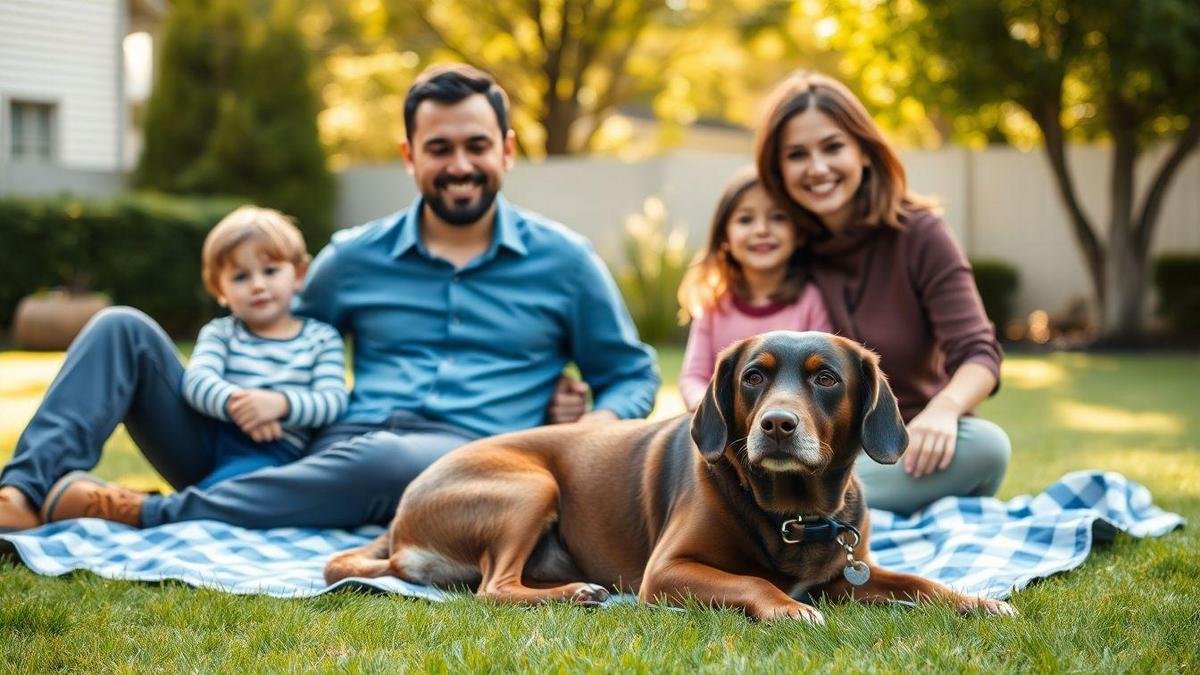
How I balance health, lifespan, and daily care (Melhores raças de cães para famílias com crianças pequenas)
Mixed and small breeds often have longer lifespans
I favor mixed and small breeds because they can stay healthy longer and often have fewer inherited issues. Smaller dogs usually eat less and need gentler exercise. Still, every dog is an individual — I watch behavior, weight, and energy weekly and call the vet if something changes.
Cost and care facts I track
| Item | How often | Typical cost range | Quick note |
|---|---|---|---|
| Wellness vet visit | Annually | $50–$200 | Checkups, vaccines, health tips |
| Vaccines & tests | As needed | $20–$150 each | Puppies need a series |
| Preventive meds (flea/heartworm) | Monthly | $10–$50/month | Set reminders for doses |
| Food | Weekly/Monthly | $20–$80/month | Balanced, age‑appropriate food |
| Grooming | Every 1–3 months | $0–$80 | Small dogs may need trims |
| Supplies (bed, leash) | One‑time/replace | $20–$200 | Buy durable items |
| Emergency fund | Keep available | 1–3 months of pet costs | Safety net for surprises |
I include one‑time procedures and their benefits in planning; for example, consider the long‑term health and behavioral points related to neutering benefits when budgeting and scheduling.
My budget and care checklist before adopting
- Space: Room for feeding, sleeping, and play?
- Time: Can I give daily walks, play, and training?
- Allergies: Does anyone react to dogs?
- Budget: Can I cover routine costs and an emergency fund?
- Temperament match: Will the dog do well with small kids?
- Vet access: Nearby trusted clinic?
I tick each box before bringing a dog home so surprises stay low. This helps me pick from the Melhores raças de cães para famílias com crianças pequenas that fit our life. For a general primer on routine care, check a simple guide to caring for pets.
Conclusion
Choosing a dog for a family with young children means prioritizing safety and temperament. A calm, patient dog becomes a reliable companion for kids. Match size to your home and child’s age, consider hypoallergenic options if allergies are present, and balance activity needs with your family pace. Short, positive training and early socialization are non‑negotiable. Keep a clear budget and health checklist so surprises are rare. Take it slow, watch interactions, and trust small wins.
For families searching “Melhores raças de cães para famílias com crianças pequenas”, focus on breeds that combine calm temperaments, trainability, and a fit with your space and routine — and compare your shortlist with a broader list of the best dog breeds for families with kids to refine choices.
Frequently asked questions
- Which breeds are best for families with kids?
- I recommend Labrador and Golden Retrievers for their gentleness and patience. Poodles are great if you need low‑shed options. For more breed ideas, see the roundup of family‑friendly breeds.
- Are small dogs good with toddlers?
- Some small breeds (Cavalier, Bichon) are excellent, but tiny dogs can get hurt easily — always supervise. To help a new small dog adjust, follow guidance on helping pets adjust to a new indoor environment.
- How do I pick a dog for an active family?
- Match energy levels. Consider Labrador, Border Collie, or Beagle and plan daily exercise and training. Use interactive play and indoor exercise ideas like those for interactive toys or an indoor agility course when weather limits outdoor time.
- Which breeds are safest around young children?
- Look for calm, patient dogs: Goldens, Labs, and well‑trained Collies often fit well. Early socialization and obedience training from a basic obedience plan reduce risks.
- What simple training helps dogs and kids bond?
- Teach sit, stay, and gentle touch. Use short, fun sessions and reward calm behavior. For settling indoors and building routines, techniques from teaching your dog to settle on command and daily habit tips like daily habits to keep pets happy indoors work well.
If you want a short list of top picks tailored to your home size and child age, tell me your city, home type (apartment/house), and child ages — I’ll recommend Melhores raças de cães para famílias com crianças pequenas that fit your family.

